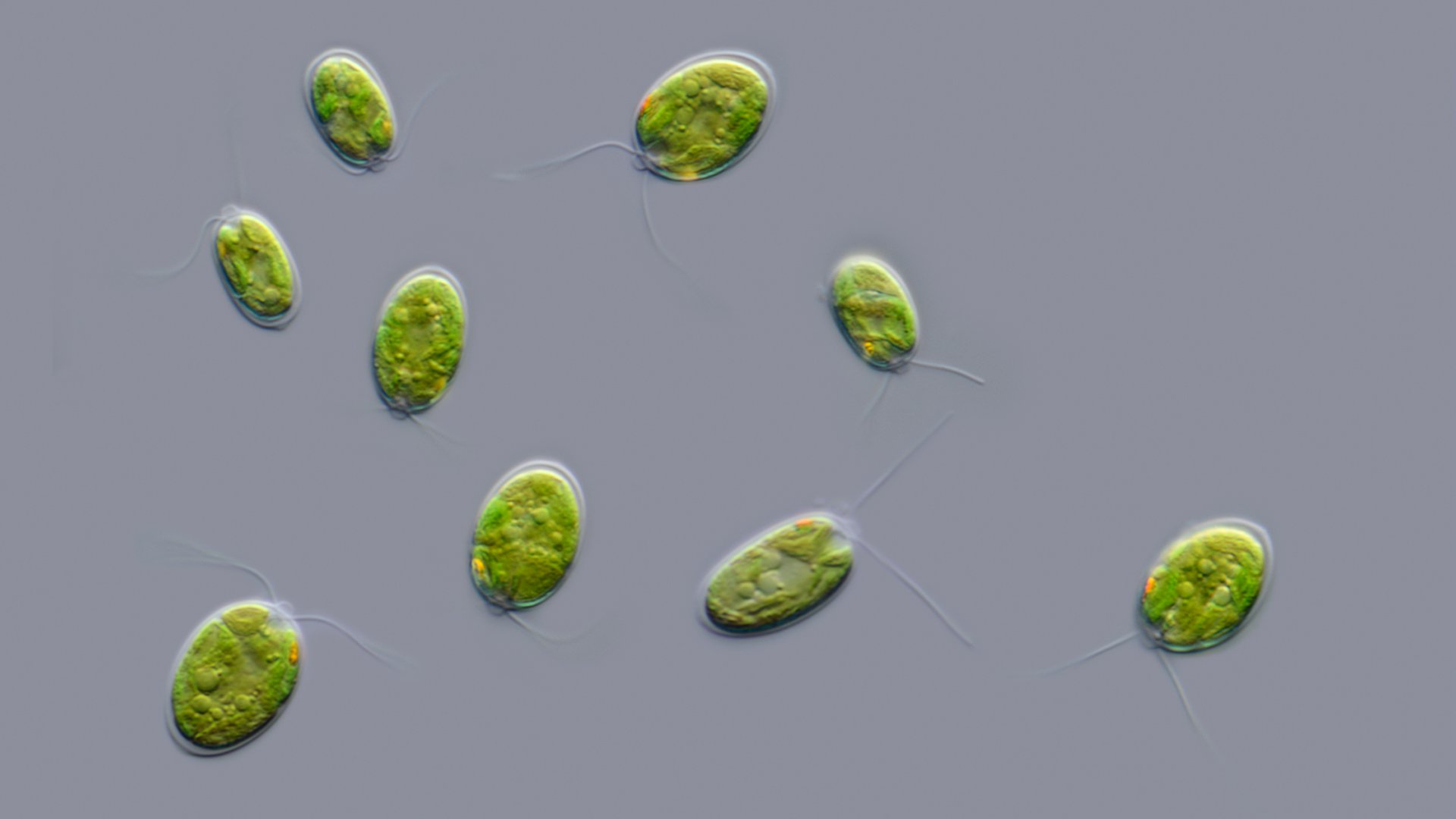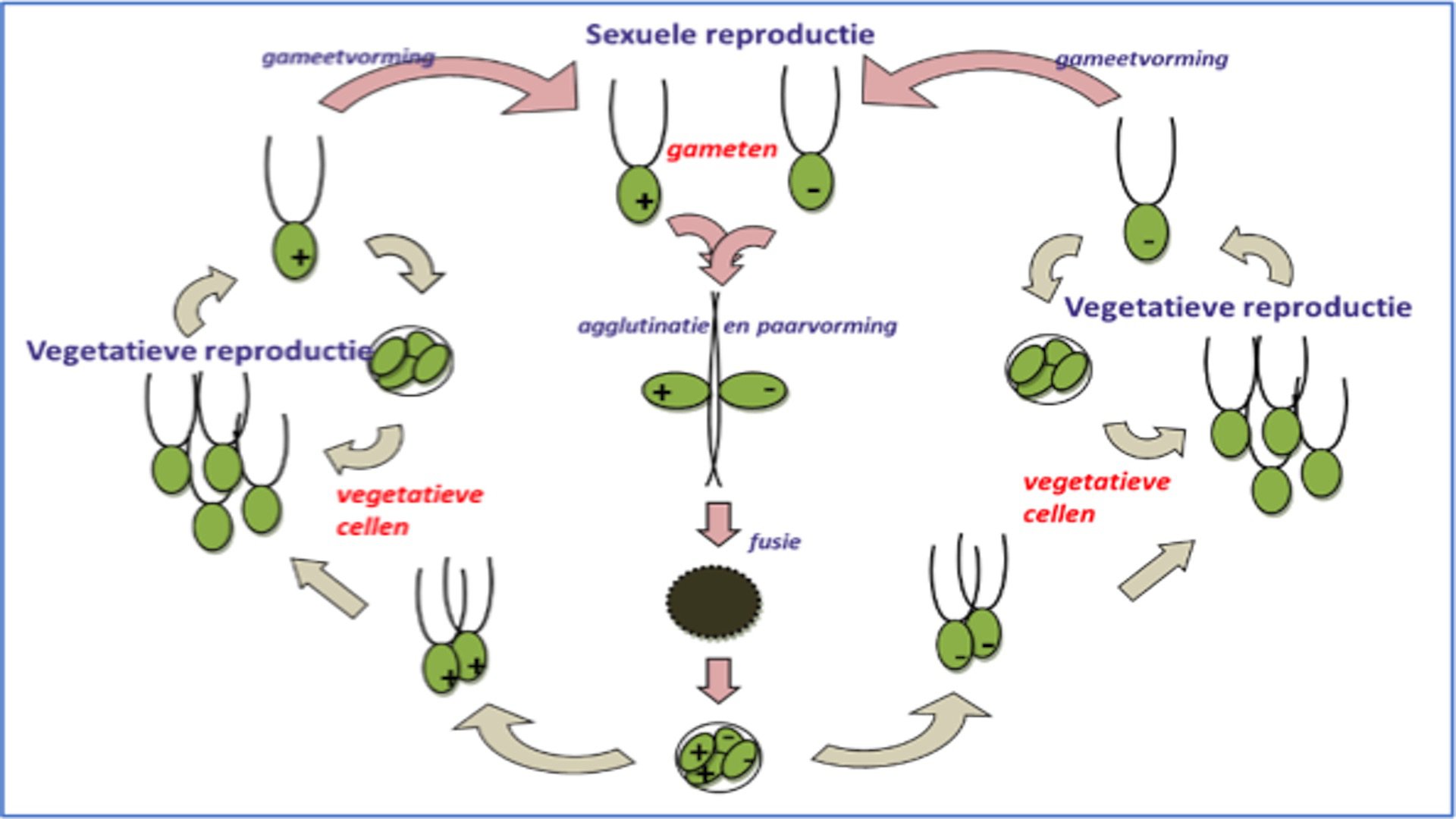My name is Anna Tomson. Since my retirement in 2017, I have been working as a volunteer in the ARTIS-Micropia laboratory. I have a long relationship with ARTIS. As a biology student at the University of Amsterdam in the 1970s, I came to ARTIS almost every day. At that time the zoological laboratories were still there and lectures and practical assignments were given. I specialized in plant physiology and cell biology and did my PhD research at the Department of Molecular Cell Biology. For years I have been researching the sexual interactions of the single-celled green algae Chlamydomonas, and some of my discoveries are the subject of this blog. I would like to tell you a bit more about the fascinating world of these swimming green cells.
The smallest independently operating unit in nature
The smallest, independently operating unit alive is the cell. A living creature can consist of just one cell, of loosely connected cells (a colony) or of a complex system of millions of cells, such as higher plants and animals. For multicellular plants and animals it is clear that functioning as a unit depends on good communication between the cells that make up the organism. In a disease such as cancer, this communication is disrupted. This can lead to unrestrained growth of cells that have escaped normal "social cell control". Cell-cell communication also plays an essential role in external threats, in the defence of infections by fungi, bacteria and viruses. In this case, communication between the cell(s) of the host and that of the invader. Another example of the importance of cell-to-cell communication is fertilization, which is an indispensable part of the sexual reproduction of plants and animals. Sexual reproduction of the unicellular green algae Chlamydomonas consists of a relatively simple form of fertilization. It therefore lends itself well to biological research. More insight into the simple forms of cell-cell communication can lead to a better understanding of more complex organisms.
Chlamydomonas: a model system for cell-cell communication
The main role in fertilization is played by cells of the two sexes: the gametes. Gametes are also called germ cells. A gamete is a cell whose only, very important, function is to find and merge with a gamete of the opposite sex. This marks the beginning of a new generation of the organism with a new, unique combination of hereditary traits from both parents. In a multicellular organism, the gametes are often formed in a special genital organ. Because Chlamydomonas is unicellular, and therefore has no organs, this green algae develops entirely into a gamete.

Chlamydomonas cells
Chlamydomonas cells are 0.01mm in size, ovoid and surrounded by a tough cell wall. Two whip-like appendages, called flagella, protrude through the cell wall. With this, the cell moves through the water ‘in breaststroke’. As long as there is enough light and food (mineral salts), the cells grow quickly and multiply through cell division. This is called asexual or vegetative reproduction. When food runs out, the cycle of asexual reproduction is interrupted and the cells develop into gametes. In short: if the conditions are right, the algae prosper: they increase in size and divide into two, four or eight ‘baby cells’. If the supply of food is depleted, a partner is sought. Sexual reproduction leads to more genetic diversity in the offspring than asexual reproduction, and in this way a species can adapt better to changed conditions. In contrast to higher organisms, the two different gametes of Chlamydomonas are indistinguishable from each other. That is why they are not called female and male gametes (such as ova and sperm cells in humans), but 'plus' and 'minus' gametes.

Life cycle Chlamydomonas, with its sexual and asexual (vegetative) reproduction
Sexual communication and picky couples
Gametes of the opposite sex must come into contact with each fertilization process. In the world of brown algae, very refined techniques have sometimes been developed for this, for example where a female gamete which is stuck somewhere manages to attract swimming male gametes by secreting a specific attractant substance. However, attractants do not appear to play a role in Chlamydomonas. There is not a type of Chanel for Chlamy.
Gametes differ from vegetative cells in the presence of sticky substances on the flagella. This adhesive power is very specific and only works in contact with a suitable partner gamete. This allows gametes, surrounded by all kinds of other organisms in the water around them, to recognize and bind gametes of the opposite sex of their own species. The filamentous adhesives are called agglutinins. The sticking together is called agglutination or adhesion. Agglutination often takes place between multiple gametes of both sexes to form large cell groups. Initially, the contacts in such a group are completely disorganized, but after a while sorting occurs and pairs consisting of a plus and a minus gamete are formed. Just as with young people who secretly judge each other at a school party before the become boyfriend and girlfriend, algae can also gather together before they form a sticky couple. In a Chlamydomonas couple that has found each other, the cell wall is shed or partially dissolved, after which the cells fuse into a so-called zygote. Such a zygote has a resistant structure with a thick cell wall. Once conditions are favourable again, the zygote will germinate into multiple cells, initiating a new cycle of vegetative propagation.
Chlamydomonas in Micropia
In the Micropia laboratory, no scientific research like the discoveries of Anna at the university described above is carried out. However, our lab, and many other cultivating laboratories, are eager to use the results of scientific research. Knowledge about the asexual and sexual reproduction of algae is important for the cultivation of algae. For example, if we want to produce a large algae flask for a set-up, it is helpful if the algae divide asexually and grow and multiply quickly. In addition, through research we also know exactly how much food we should add to the culture with Chlamydomonas, and how often.
Do you want to know more about Chlamydomonas or other green algae? Also read the story about " The green gold ". You may know most algae from green ditches in the spring, but there is also a species of Chlamydomonas that can grow in the snow. Or would you like to see Anna in action with the different types of green algae that she takes care of in the lab? Visit her at Micropia.
